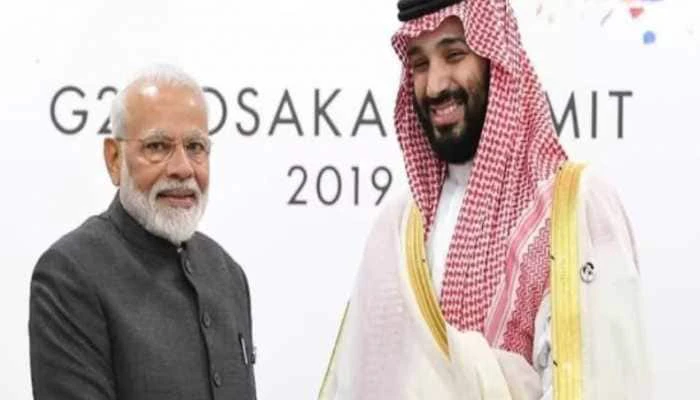Washington/Riyadh/Brussels: Indias trade relations with the United States have entered a difficult phase. In Washington, the administration of Donald Trump has moved to impose a 50% tariff on Indian goods, citing New Delhis continued purchase of discounted Russian oil.
The decision marks an escalation in an already strained partnership.
Diplomatic tensions are not limited to trade. America recently hosted Pakistan Army Chief Field Marshal Asim Munir for the second in two months. From U.S. soil, he issued a nuclear threat to India and echoed rhetoric he used before the Pahalgam terror attack in Kashmir. These developments have raised fresh questions about the direction of U.S.-India ties.
Strategic experts believe New Delhi should now widen its options. India stands at a geopolitical crossroads. Trust in the Western bloc no longer offers certainty. In West Asia, however, strategic opportunities built on practicality and mutual benefit are emerging, foreign policy analyst Dr Nishikant Ojha.
Europe has been a long-standing partner for India, but its approach has grown hesitant. The European Union continues to link trade deals to political positions, including opposition to Russian oil imports even while some European states indirectly buy LNG from Moscow. This, he says, reflects the complexity of the Western alliance.
Economic and Strategic Depth in the Gulf
Trade between India and the Gulf now totals $161 billion annually. Nearly 60% of Indias oil and 70% of its gas come from this region. Around nine million Indians live in Gulf states, sending home $50 billion a year in remittances, a source of stability for Indias economy.
The Gulf provides India with a framework built on energy security, diaspora influence and corridor-based connectivity, he explains.
One of the most important projects in this vision is the India-Middle East-Europe Economic Corridor (IMEEC). Backed by India, Gulf partners, the EU and countries such as France, Italy and Germany, it aims to link India to the Israeli port of Haifa via the UAE and Saudi Arabia, and from there to southern Europe.
Italy is emerging as a strategic partner in the plan. Europe, increasingly reliant on Gulf energy supplies, sees this as an opportunity to strengthen economic and political links, a trend India can leverage.
A Look West Policy in Motion
New Delhi is deepening engagement with West Asia under its Look West strategy. Defence, trade and diaspora welfare are key pillars. The Indian Navy has expanded its presence in the Gulf, holding air and naval drills with the UAE and Oman.
Even after the Gaza conflict, Prime Minister Narendra Modi and External Affairs Minister S. Jaishankar have kept high-level engagement with Gulf leaders, keeping the IMEEC alive.
However, challenges remain. Houthi attacks in the Red Sea, tensions between Israel and Iran and a lack of internal unity within the E.U. threaten the corridors progress. European nations also continue to raise human rights concerns with India.
For Dr Ojha, India must take a balanced approach, which is exporting BrahMos missiles and warships to Gulf militaries, maintaining strategic engagement with Israel for high-tech access and pushing ahead with Irans Chabahar port and the International North-South Transport Corridor.
Strengthening ties with Europe while acting as a bridge between Europe, the Gulf and Asia, he says, will position India strongly in a shifting global order.
